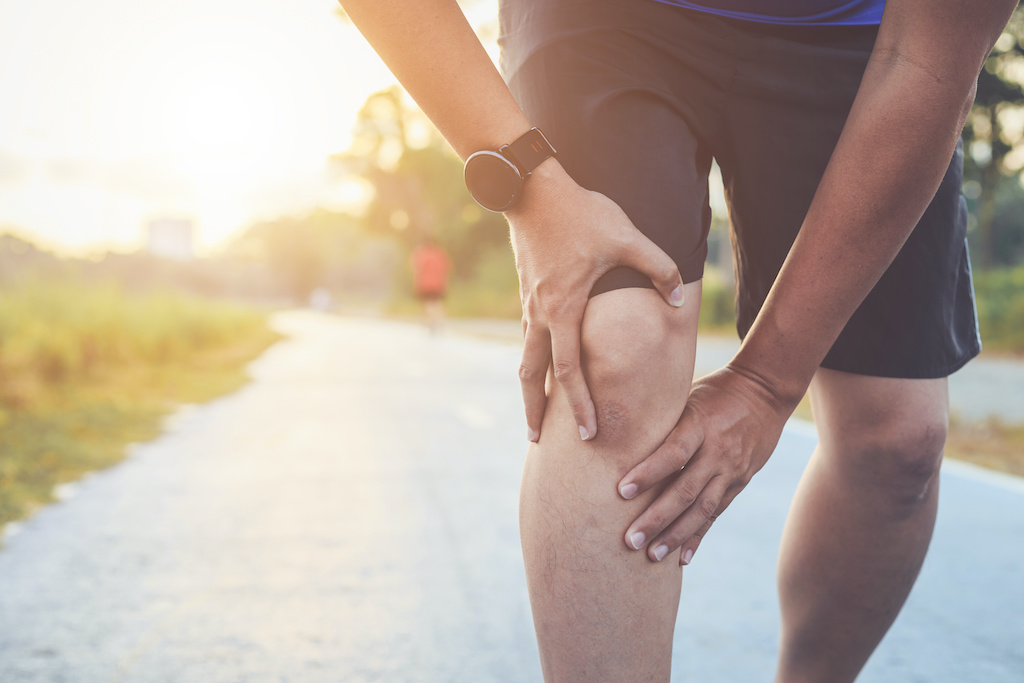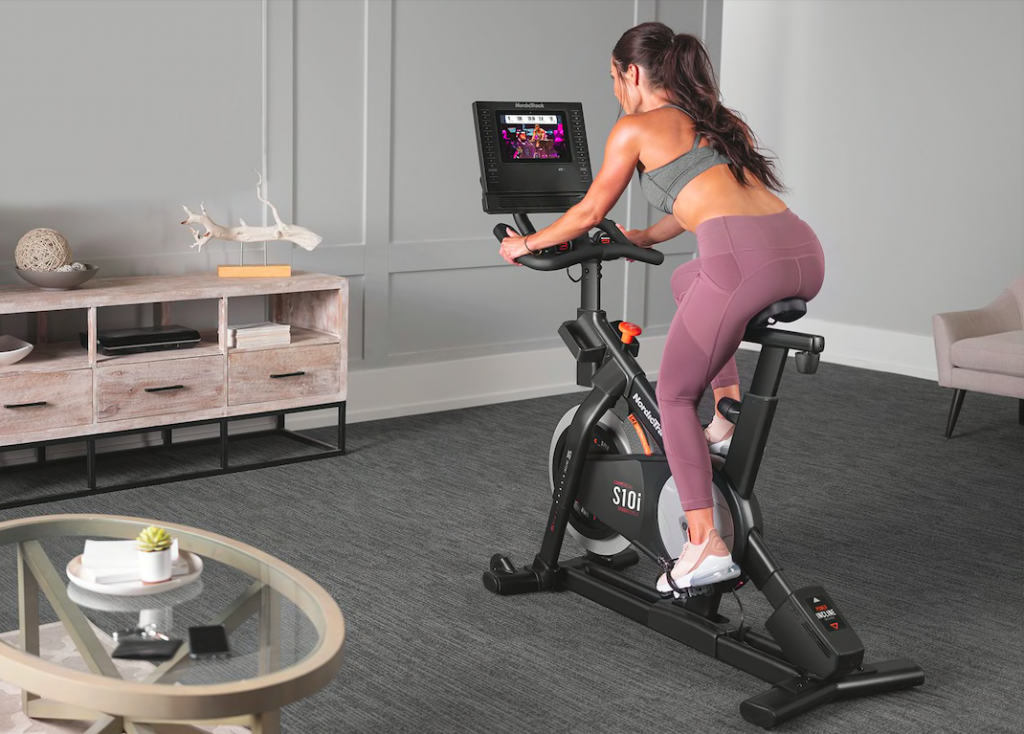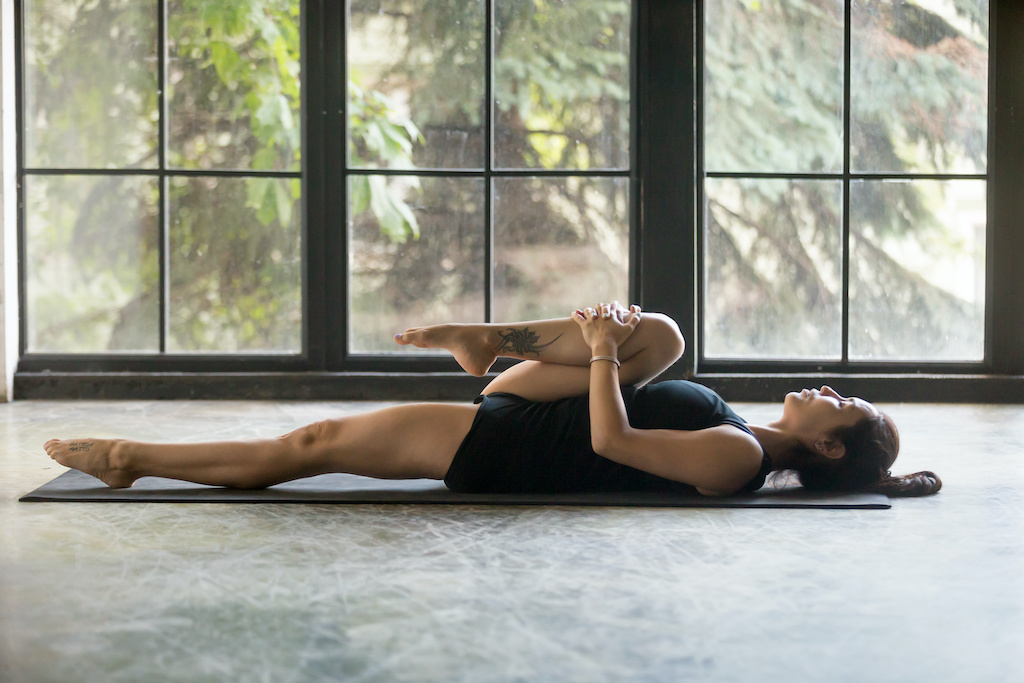In constant use, the knees can be strengthened by certain targeted exercises. Improve your posture and balance while protecting your knees with warm-ups or sessions of sporting activities and limit the occurrence of pain and injuries by getting into good habits.
Strengthen your knees for a healthy degree of articulation

Connecting the thigh bones to the shins, the knees are essential for our mobility and support the entire weight of the body. Maintained by the cruciate ligaments, the knee joint provides flexion and extension of the leg, thanks to the cartilage that is present at the ends of the bones as well as the lubricating fluid produced by the joint capsule, the synovium. The kneecap, or patella, is a small, flat, triangular bone that is located at the front of the knee, attached to the quadriceps and acting as a pulley. On either side of the knee, the menisci pads help to stabilise the joint.
Where does knee pain come from?
The sensation of knee pain can have different origins, the most common being:
Stress of the ligaments, something that often follows an injury or a bad movement resulting in the sprain or rupture of the cruciate ligaments.
Deterioration of the joint: With age or in cases of chronic inflammation, the joint may undergo degradation, such as gonarthrosis or osteoarthritis of the knee, something that causes stiffness and pain and, in some cases, even an effusion of synovium. Athletes can sometimes also suffer from patellofemoral syndrome due to too much stress on the joint.
In cases of knee pain, it is best to seek advice from a healthcare professional before continuing to exercise. On the other hand, once an injury has healed, taking part in a sport that strengthens the joint can only be of benefit.
The advantages of building muscle to strengthen the knees
Doing exercises to strengthen the muscle groups around the knees has beneficial effects in both the short and long terms:
Greater flexibility of the joint, which allows a greater range of motion
The ability to maintain optimal knee mobility for longer
Improved stability
Greater strength
Additional benefits
Practices worth adopting for better stability of the knees

The knee joint is connected to 4 main groups of muscles:
The quadriceps, at the front of the thighs
The hamstrings, on the back of the thighs
The adductors, inside the thighs
The abductors, on the outside of the thighs
All these muscles are not used in the same way in everyday life or in sports. This is why it is important to get each of them working to have stable support and to strengthen your knees without creating any imbalance.
5 exercises to consolidate your knee strength
Regularly perform these 5 exercises to build muscle without placing the knees under undue stress:
The straight leg lift: Ideal for those who have trouble bending the knees, it works the quadriceps. Lying on your back, raise one leg until you have your feet about six inches off the ground, then put it back down. Do sets of 15 to 20 reps for each side.
The glute bridge: This works on the buttocks and the back of the thighs while helping to stabilise the knees. Lying on your back, with your legs bent and your feet on the floor hip-width apart, lift your pelvis without bending your back. Hold this pose for 15 seconds.
The clam exercise: Lying on one side, resting on one elbow and with your legs slightly brought towards you, raise the upper knee in sets of 15 repetitions, without lifting the foot. Building muscular glutes will help to reduce the load on the knees.
Heel raises: Stand on your tiptoes several times, holding the position for a few seconds. This movement improves balance and prevents wear and tear on cartilage.
The squatting chair: Start with your back against a wall and gradually squat down with your arms held straight in front of you without your knees passing in front of the toes. This exercise strengthens the knees without straining them by working all the groups of muscles around them.
Mistakes to avoid that will preserve your knees
It is just as important to take care of your knees by getting into good habits:
Keeping to a healthy weight is one of the safest ways to maintain healthy knees. Stay hydrated and make sure you eat a balanced diet.
Ensure each resumption of an activity is done in a measured way: Integrate any new exercises into your sports routine gradually.
Never place excessive force on an injured knee and look after the second knee, which will tend to overcompensate for the injured one.
Wear comfortable and stable shoes, both in everyday life and during your training.
Pay attention to your posture so as not to strain your knees.
Warming-up and stretching to protect your knees

To minimise the risk of injury and to protect your knees for the longer term, pay special attention to warm-ups and stretching. To warm up, get the muscles working without straining the knees, for example, by walking or using an exercise bike. At the end of the session, remember to stretch to gradually
improve your joint flexibility and to prevent stiffness. To avoid going beyond the range of motion that the knee can withstand, it is best to stretch with the support of the floor.
Check out our Health & Fitness page for more advice.
